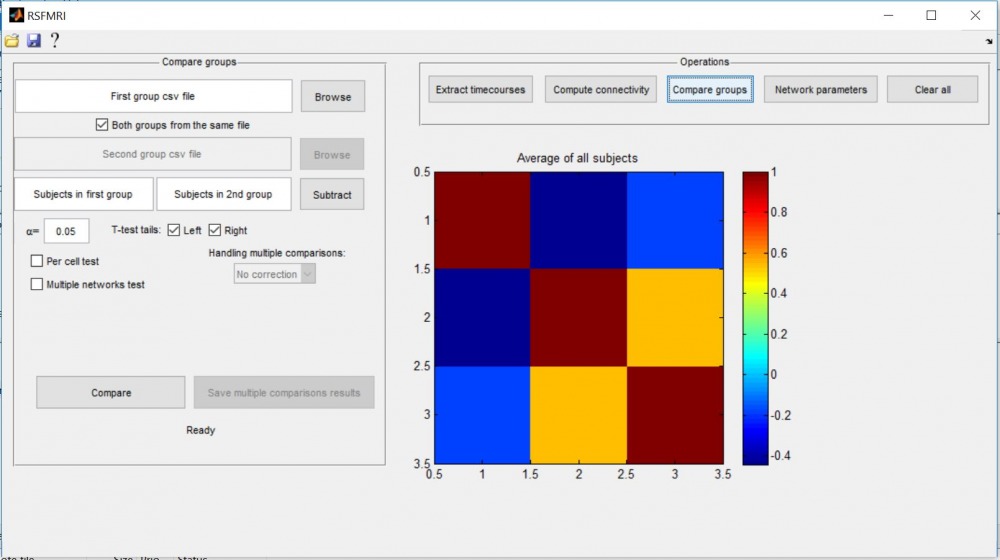We have developed a simple MATLAB tool for functional connectivity analyses of resting-state fMRI data.
This tool takes pre-processed data in NIFTI format, and a brain parcellation atlas (e.g. AAL), and computes average connectivity within and between regions or functional networks, and network's graph theory parameters. Further comparisons between subject groups (e.g., patients and controls) are also available.
The tool contains four tabs:
1. Time-course extraction - applies intensity-based masking (Peer et al. 2016, Human Brain Mapping), masks with grey-matter segmentation and extracts the average time-course from each atlas region.
2. Connectivity computation - computes average inter- and intra-network connectivitiy values for each subject (networks are defined by the user as a set of atlas regions), based on the extracted time-courses.
3. Group comparisons - compares connectivity between subject groups, based on the computed connectivity values.
4. Network parameters - computes graph theory parameters (average node degree, clustering coefficient, shortest path length, and small-world coefficient) for each functional network.
The full MATLAB code for the connectivity analysis tool can be found here: RSFMRI_analysis_tool.zip
The connectivity analysis tool was created by Michael Peer and David Krispin. For questions please contact michael.peer (at) mail.huji.ac.il .

